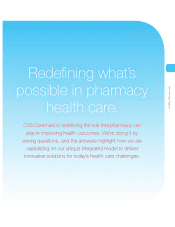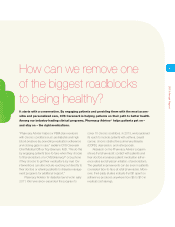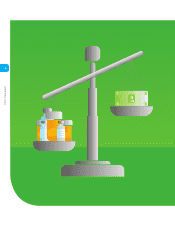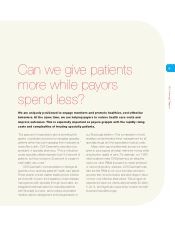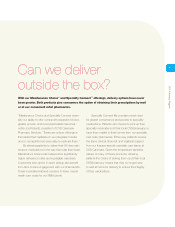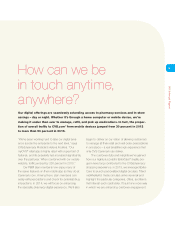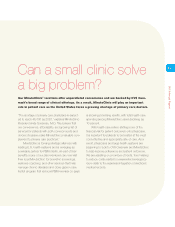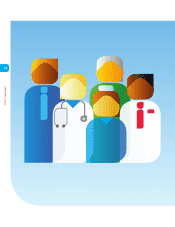CVS 2013 Annual Report Download - page 5
Download and view the complete annual report
Please find page 5 of the 2013 CVS annual report below. You can navigate through the pages in the report by either clicking on the pages listed below, or by using the keyword search tool below to find specific information within the annual report.
3
2013 Annual Report
How can we remove one
of the biggest roadblocks
to being healthy?
It starts with a conversation. By engaging patients and providing them with the most acces-
sible and personalized care, CVS Caremark is helping patients on their path to better health.
Among our industry-leading clinical programs, Pharmacy Advisor® helps patients get on –
and stay on – the right medications.
“Pharmacy Advisor helps our PBM plan members
with chronic conditions such as diabetes and high
blood pressure by promoting medication adherence
and closing gaps in care,” explains CVS Caremark
Chief Medical Officer Troy Brennan, M.D. “We do this
by engaging patients face-to-face when they choose
to fill prescriptions at a CVS/pharmacy® or by phone
if they choose to get their medications by mail. Our
interventions can also include reaching out directly to
their doctors or referring patients to disease manage-
ment programs for additional support.”
Pharmacy Advisor for diabetes launched in early
2011. We have since expanded the program to
cover 10 chronic conditions. In 2013, we broadened
its reach to include patients with asthma, breast
cancer, chronic obstructive pulmonary disease
(COPD), depression, and osteoporosis.
Research on the Pharmacy Advisor program
shows that pharmacist contact with patients and
their doctors increases patient medication adher-
ence rates and physician initiation of prescriptions.
The greatest improvements can be seen in patients
counseled face-to-face at retail pharmacies. More-
over, third-party studies indicate that $1 spent on
adherence produces anywhere from $5 to $10 in
medical cost savings.



